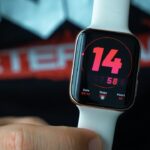Virtual Reality (VR) fitness is revolutionizing the way we exercise at home, combining immersive technology with physical activity to offer a unique, engaging, and effective workout experience. This innovative approach is gaining popularity, particularly as more people seek convenient and enjoyable ways to maintain their fitness from the comfort of their homes. Let’s explore why VR fitness is the next big thing in home workouts.
Immersive Workout Experiences
VR fitness apps transport users to a variety of virtual environments, from serene beaches and lush forests to futuristic cities and outer space. These immersive settings make workouts more engaging and enjoyable, turning routine exercises into exciting adventures. Imagine running through a vibrant cityscape or practicing yoga on a tranquil island—all without leaving your living room.
Gamification of Exercise
One of the most compelling aspects of VR fitness is the gamification of workouts. Many VR fitness programs incorporate game-like elements, transforming exercise into interactive challenges that motivate users to push their limits. With features like leaderboards, rewards, and missions, working out feels more like playing a game than a chore. This gamification keeps users motivated and makes fitness fun.
Variety of Workout Options
VR fitness offers a wide range of activities to cater to different fitness preferences and goals. Whether you’re into high-intensity boxing, energetic dance routines, calming yoga sessions, or even guided meditations, there’s something for everyone. This variety ensures that users can find workouts that suit their interests and keep their routines fresh and exciting.
Real-Time Feedback and Tracking
VR fitness systems provide instant feedback on form and performance, helping users improve their technique and avoid injuries. These systems can track your movements, monitor your progress, and offer personalised coaching, making it feel like you have a personal trainer right at home. Real-time tracking and feedback help users stay motivated and achieve their fitness goals more effectively.
Social Connectivity
Despite being a home-based workout solution, VR fitness can be highly social. Many VR fitness platforms offer multiplayer options, allowing users to work out with friends or join virtual classes. This social connectivity fosters a sense of community, making exercise more enjoyable and less isolating. It’s like having a virtual gym where you can meet and interact with others while staying fit.
Accessibility and Convenience
VR workouts can be done anytime, anywhere, eliminating barriers such as gym commutes, membership fees, or weather constraints. This accessibility makes it easier for people with busy schedules to fit exercise into their day. The convenience of VR fitness means that users can enjoy a wide range of workouts whenever it suits them, without the need for expensive gym equipment or memberships.
Potential for Personalised Workouts
The integration of artificial intelligence (AI) in VR fitness can lead to highly personalised workout plans. By analyzing individual performance and preferences, AI can recommend workouts that are tailored to each user’s needs and goals, enhancing the effectiveness of the fitness program. Personalised workouts ensure that users get the most out of their exercise routine.
Devices for VR Fitness
Several devices are available that make VR fitness accessible and enjoyable. Here are some of the most popular options:
- Oculus Quest 2: This standalone VR headset from Meta offers a wide range of fitness apps like Supernatural, FitXR, and Beat Saber. It’s wireless, making it easy to move around during workouts.
- HTC Vive: Known for its high-quality graphics and wide field of view, the HTC Vive provides an immersive VR fitness experience. Popular apps include BoxVR and The Thrill of the Fight.
- PlayStation VR: For those who own a PlayStation console, PlayStation VR offers fitness games such as BoxVR and Creed: Rise to Glory. It’s a great option for gamers looking to stay fit.
- Valve Index: This high-end VR system offers precise tracking and finger tracking, ideal for detailed fitness apps and games. It works well with apps like The Thrill of the Fight and VRChat for social workouts.
How It Works
VR fitness systems use a combination of VR headsets, motion controllers, and sometimes additional accessories like sensors and cameras to track the user’s movements. Here’s a brief overview of how it works:
- Setup: Users set up their VR headset and controllers. Some systems require external sensors or cameras for tracking.
- Select a Workout: Users choose a workout from the VR fitness app library. Options range from boxing and dancing to yoga and meditation.
- Immersive Environment: The headset displays an immersive virtual environment, making users feel as if they are in a different location.
- Real-Time Interaction: Motion controllers and sensors track the user’s movements, allowing them to interact with the virtual environment. This interaction includes punching, dodging, stretching, or dancing, depending on the workout.
- Feedback and Tracking: The system provides real-time feedback on the user’s form and performance. Some apps offer personalized coaching and progress tracking.
Integrating VR Fitness with Personal Coaching
VR fitness offers a unique opportunity to enhance personalized coaching services. Coaches can use VR technology to provide clients with engaging workouts that complement their in-person sessions. This hybrid approach ensures that clients stay motivated and active, even when they can’t make it to the gym. By incorporating VR fitness into their offerings, coaches can deliver a comprehensive fitness experience that combines the best of traditional training and innovative technology.
While VR fitness is a fantastic way to stay active and engaged, it’s essential to remember the benefits of in-person coaching. Personalised sessions with a coach provide real-time feedback on form, individualised motivation, and the personal touch that technology cannot replicate. Coaches can push clients to their limits, ensure exercises are performed correctly, and adapt workouts based on immediate observations. This human element is crucial for achieving specific fitness goals and maintaining overall well-being.
Challenges and Considerations
While VR fitness offers many benefits, there are some challenges to consider. The initial cost of VR equipment can be a barrier for some users, and sufficient space is needed to perform the workouts safely. Additionally, some people may experience motion sickness when using VR, although this can often be mitigated with proper adjustment and acclimatisation.
Conclusion
VR fitness is an exciting development in the world of home workouts, offering immersive, engaging, and effective ways to stay fit. As technology continues to advance, we can expect VR fitness to become even more accessible and personalized, making it a valuable tool for anyone looking to enhance their fitness journey from the comfort of their home. However, for those seeking the benefits of personalized coaching, in-person sessions remain invaluable for achieving and maintaining peak fitness.


